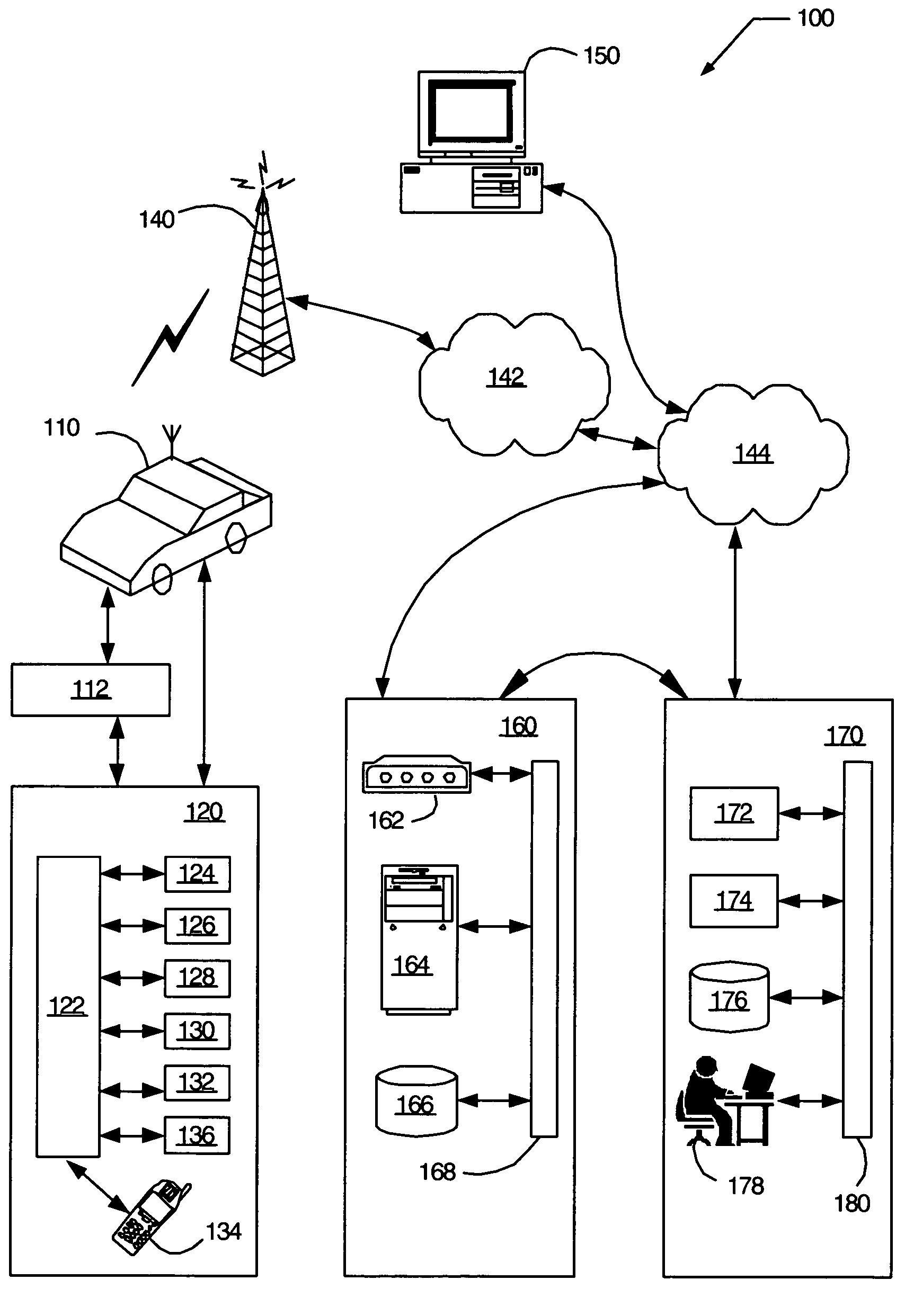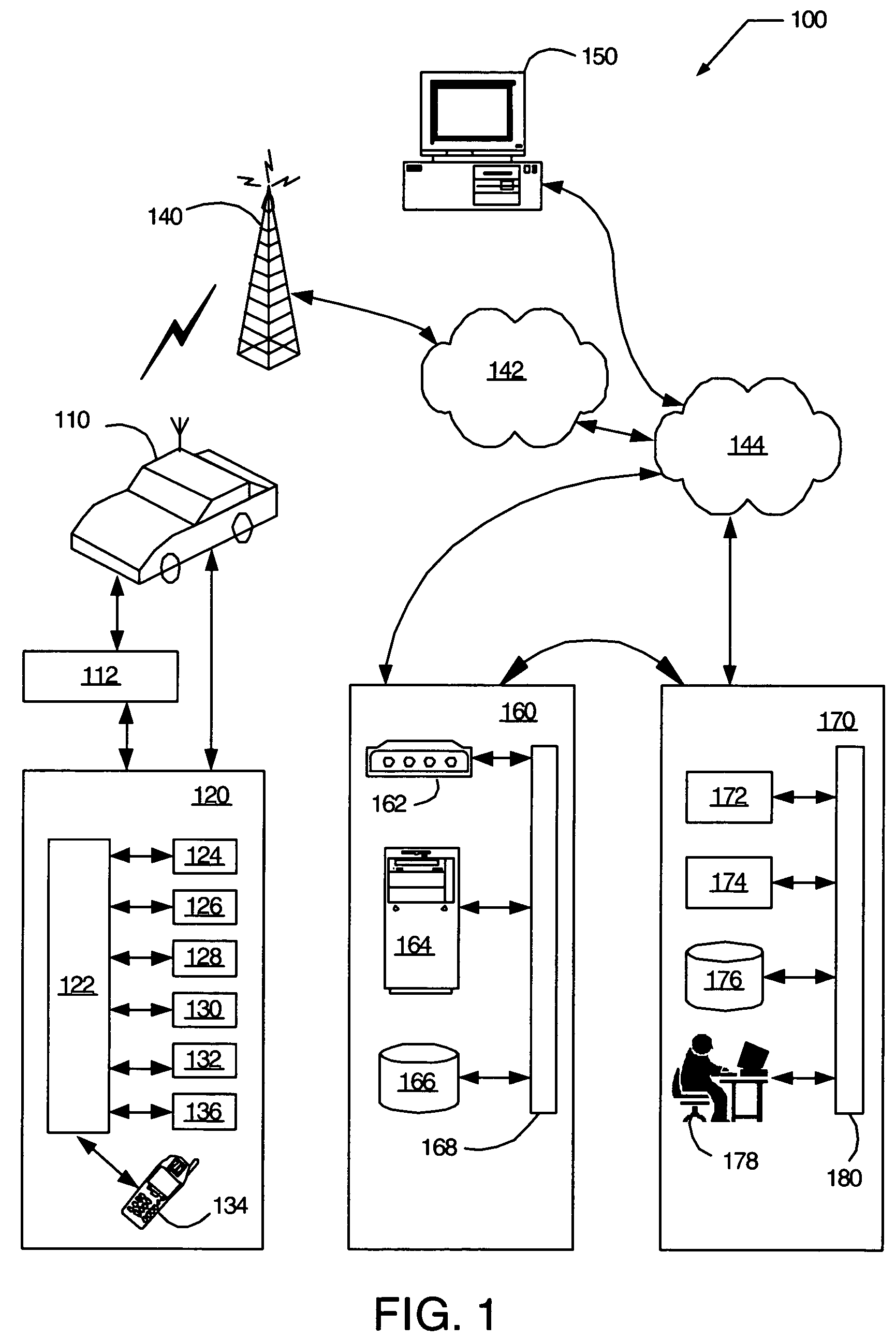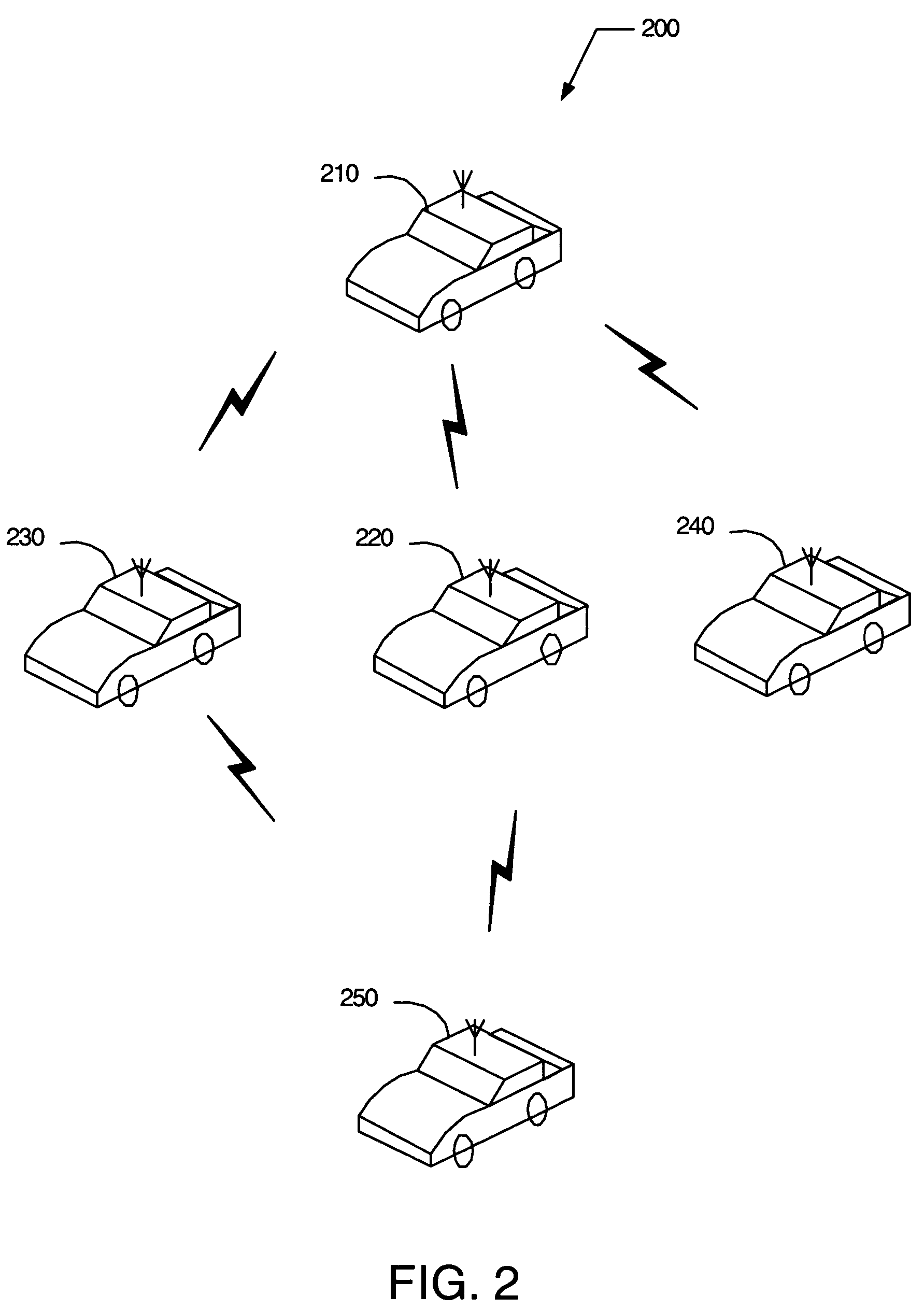Efficient lightweight information dissemination algorithm for mobile wireless ad hoc networks
a mobile wireless ad hoc network and information dissemination technology, applied in the field of wireless networks, can solve the problems of high inefficiency of flooding-based algorithms, high collision rate, and very low reachability
- Summary
- Abstract
- Description
- Claims
- Application Information
AI Technical Summary
Benefits of technology
Problems solved by technology
Method used
Image
Examples
Embodiment Construction
[0021]FIG. 1 illustrates one embodiment of a mobile vehicle communication system (MVCS), shown generally at 100. Mobile vehicle communication system 100 includes mobile vehicle 110, vehicle communication bus 112, vehicle communications unit (VCU) 120, one or more wireless carrier systems 140, one or more communication networks 142, one or more land networks 144, one or more client, personal or user computers 150, one or more web-hosting portal 160, and one or more call centers 170. In one embodiment, mobile vehicle 110 is implemented as a mobile vehicle equipped with suitable hardware and software for transmitting and receiving voice and data communications.
[0022]In one embodiment, vehicle communications unit 120 is a telematics unit that includes a digital signal processor (DSP) 122 connected to a wireless modem 124, a global positioning system (GPS) unit 126, an in-vehicle memory 128, a microphone 130, one or more speakers 132, an embedded or in-vehicle mobile phone 134, and a wir...
PUM
 Login to View More
Login to View More Abstract
Description
Claims
Application Information
 Login to View More
Login to View More - R&D
- Intellectual Property
- Life Sciences
- Materials
- Tech Scout
- Unparalleled Data Quality
- Higher Quality Content
- 60% Fewer Hallucinations
Browse by: Latest US Patents, China's latest patents, Technical Efficacy Thesaurus, Application Domain, Technology Topic, Popular Technical Reports.
© 2025 PatSnap. All rights reserved.Legal|Privacy policy|Modern Slavery Act Transparency Statement|Sitemap|About US| Contact US: help@patsnap.com



